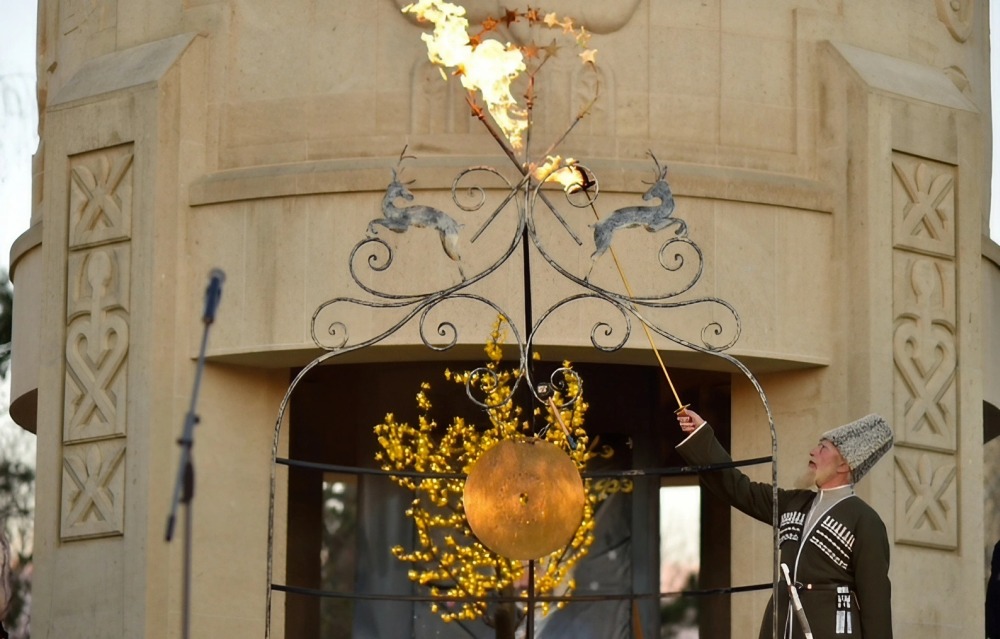The Circassian New Year: Celebrating Renewal and Fertility

On March 21st, Adyghea celebrates the Circassian New Year in accordance with ancient customs.
MAYKOP / ADYGHEA ― The ancient Circassians (Adyghes) always lived in harmony with nature, and many of their traditions and holidays are connected to it. One of the most important celebrations is the New Year, which has roots in paganism.
The Circassian New Year coincides with the Spring Equinox and is celebrated on the night of March 21-22. According to popular belief, the New Year brings the renewal of nature and marks the beginning of a new cycle. For the ancient Circassians, the New Year was a special holiday, signifying the farewell to winter and welcoming the warmth and revival of spring, which symbolises new life.
According to folklorists in Adyghea, New Year’s Day was known as “Къэрэу лъакъо тхьакIыжь” (“Washing the Feet of the Crane”) in ancient times. Circassians observed the behaviour of cranes on this day to foretell their fortune in the coming spring. If the bird acted downcast, with bowed head, and stood in dirty, cold water, it was believed that the spring would be poor and barren. However, if the crane washed its feet with clean water, flitted gaily from place to place, and then sprang up into the sky, it was seen as a sign that the coming spring would bring great fortune for the people.

In the past, a village crier would go around to announce the arrival of the New Year on the eve of the holiday. They would congratulate the villagers and invite young and old to gather before sunrise the next day for supplication and celebration.
The guests of the holiday are treated to hot cakes, cracks, Adyghe cheese - a ritual New Year's dish, and "bakhsima" - an ancient ritual drink of the Circassians. Each housewife has her own recipe for this traditional drink made from cornmeal.
The tradition of celebrating the Circassian New Year was revived in 2005 in the Republic of Adyghea, and since then, it has become one of the favourite and long-awaited cultural events for most residents of the republic. However, in Kabardino-Balkaria and Karachay-Cherkessia, this day is not officially celebrated.
As the Circassian New Year has its roots in paganism, it is not a popular custom among the broader strata of Circassian society, as most Circassians do not want to give up their Islamic identity.

Traditionally, on this day, a seven-branched hawthorn is decorated as a New Year's Tree with ribbons, as a symbol of happiness, and candles, representing warmth and light. The hawthorn is the Circassian national symbol of fertility.
According to the Minister of Culture of Adyghea, Yuri Autlev, reviving this tradition aims to preserve folk holidays and rituals, familiarize the younger generation with the historical and cultural heritage of the past, foster interest and love for the original culture of the people, and promote a tolerant attitude towards the peoples living in the republic.

Гъатхапэм и 21 р щӏымрэ гъэмрэ щызэхэкӏ махуэщ. Адыгэм и илъэсыщӏэращ. Абы ипкъ иткӏэ, сынывохъуэхъу! Илъэсыщӏэ дызытехьар махуэ фхуэхъуну, гуфӏэгъуэрэ узыншагъэрэ къыфхуихьыну, фигъэнушхуэну, фигъэтхъэну Тхьэм къыщӏигъэк!